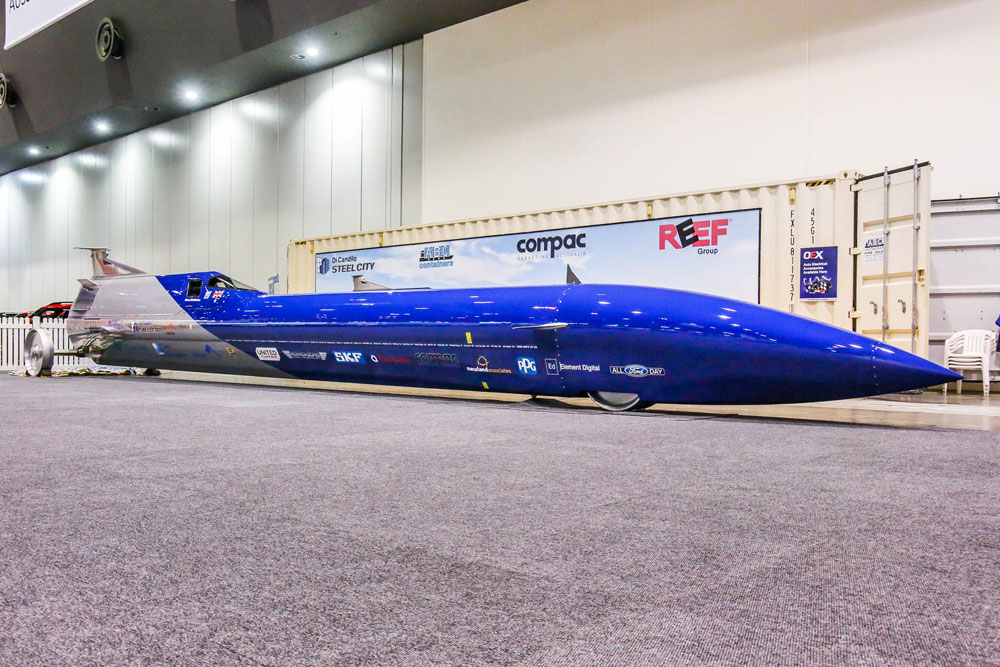Aussie Invader Looked to Nature
Our mainframe was going to be a 12-metre-long high-grade steel tube, which was just under a metre in diameter. The mainframe was rolled from a flat sheet of 10 mm thick steel and seam welded, with boundary layer rings (slight bumps) rolled into it at 300 mm intervals. The mainframe weighs in at a massive 2.5 tonnes and with all the other equipment, tanks and ancillaries, it should be close to our dry target weight of 6.3 tonnes (without propellants).
This weight will help slow Aussie Invader 5R’s acceleration down, as we need to limit the car to a maximum acceleration of 3.2 G’s. If we exceed this, the 140 kg alloy wheels will not be able to spin up quickly enough and they will lose traction, meaning all four wheels could spin at different speeds and act as gyros, wanting to pull the car in different directions, making handling almost impossible.

As for the length of our mainframe, why 12 metres long? We had to be able to transport the car interstate and internationally. We needed it to fit into a standard large transport container. The mainframe of our car, with its rear wheels on, fits neatly into a large transport container. The front wheel pack and nose cone could be removed and put into a smaller container, along with other necessary parts, tools and equipment.
The raised section behind the driver’s head is called the “top hat”. This houses the pumps, batteries, electrics and regulators for the car’s hydraulics as well as the air brake mechanics, doors, on-board computers and the two parachutes (high and low speed). This structure is also used to add support and position the vertical and horizontal stabilisers.

A “V” shaped underbelly runs the length of the car; this is to deflect the ground generated shock waves when the car goes supersonic. The “top hat” section runs aft of the drivers seating position which is towards the rear of the car. This is an ideal seating position, as it allows the driver to feel what the back of the car is doing and see front clearly.
A series of bulkheads along the length of the mainframe separating pressure vessels, oxidiser and fuel tanks from the driver and adds further stiffness and strength. A 1.5″ x .083″ roll cage made from 4130 steel is welded to the forward and aft driver bulkheads. These not only protect the driver in the event of an accident but aids in stiffening the “cut-out” for the driver’s cockpit. A detachable composite nose, bolts to the front of our mainframe and houses more on-board data monitoring equipment.
Rosco and the Aussie Invader team believe that this unique and cleverly designed car will help Australia break the World Land Speed Record and move on to 1,000 mph (1,600 + km/h).